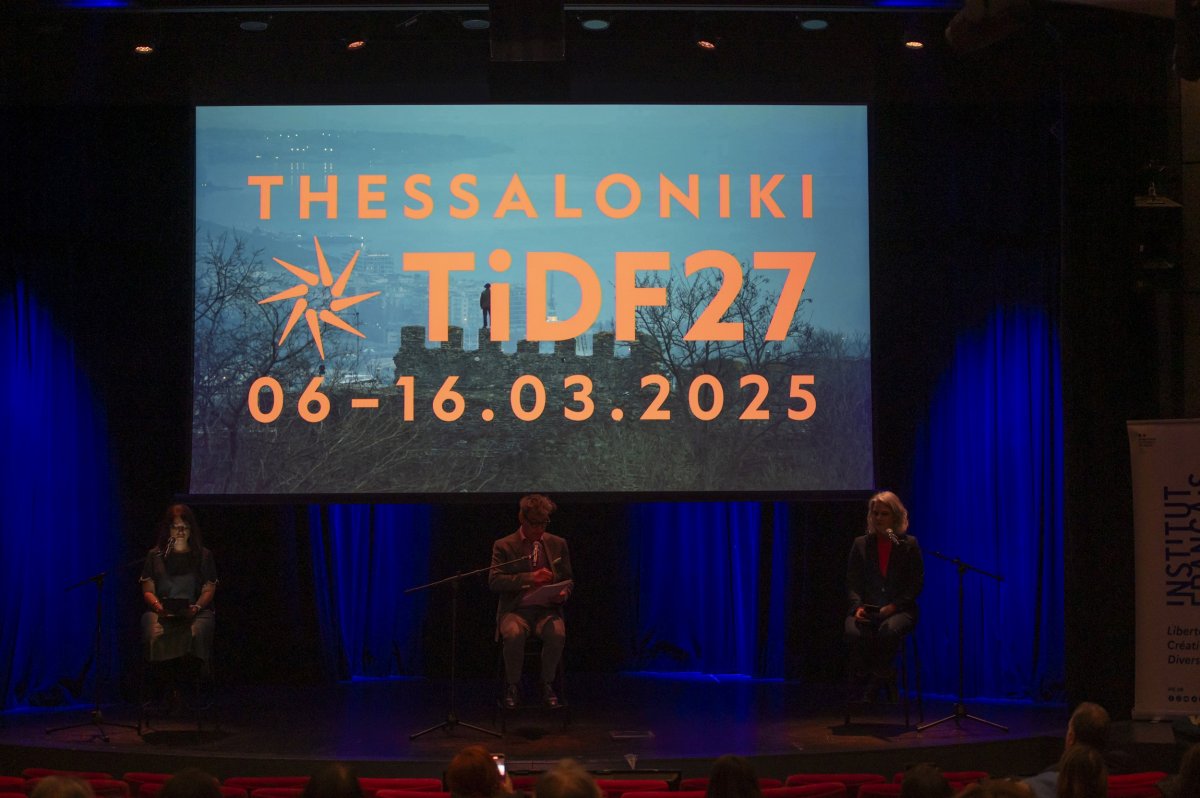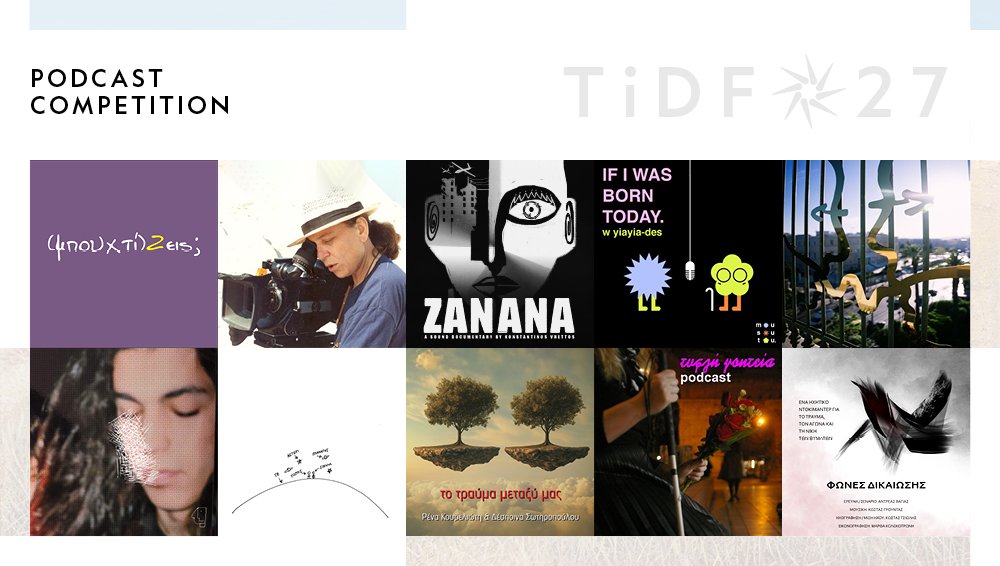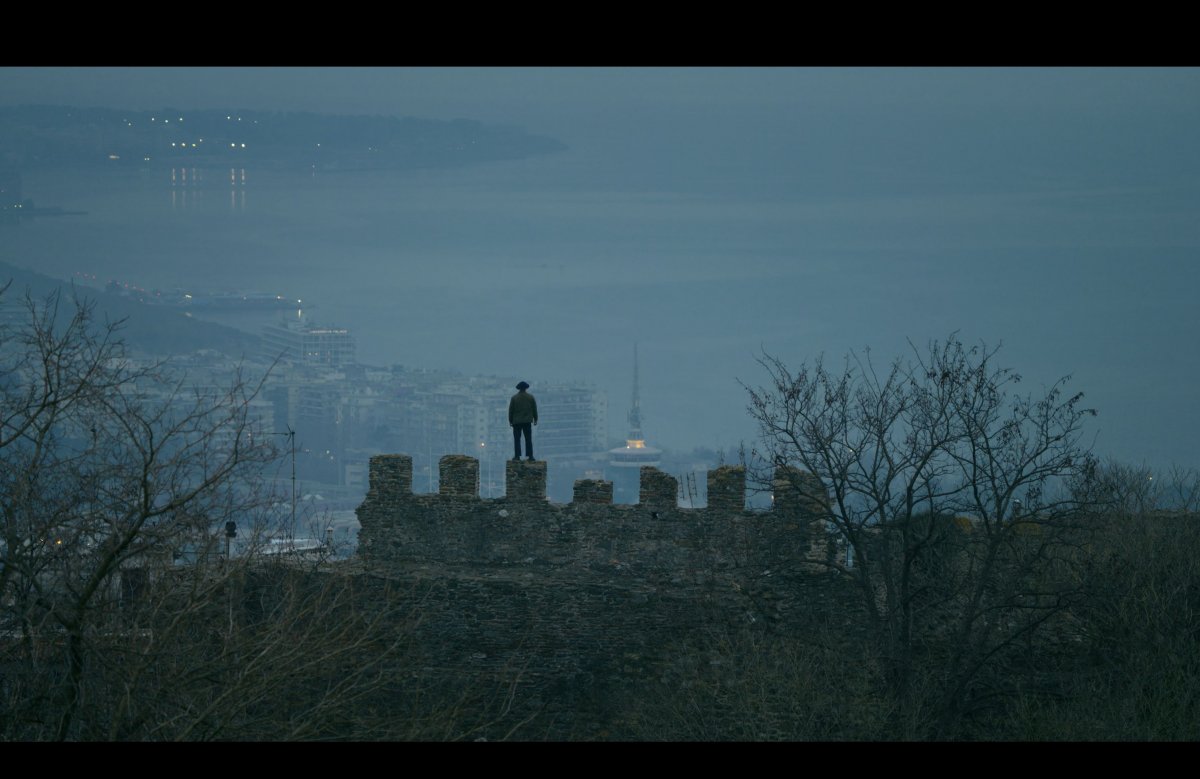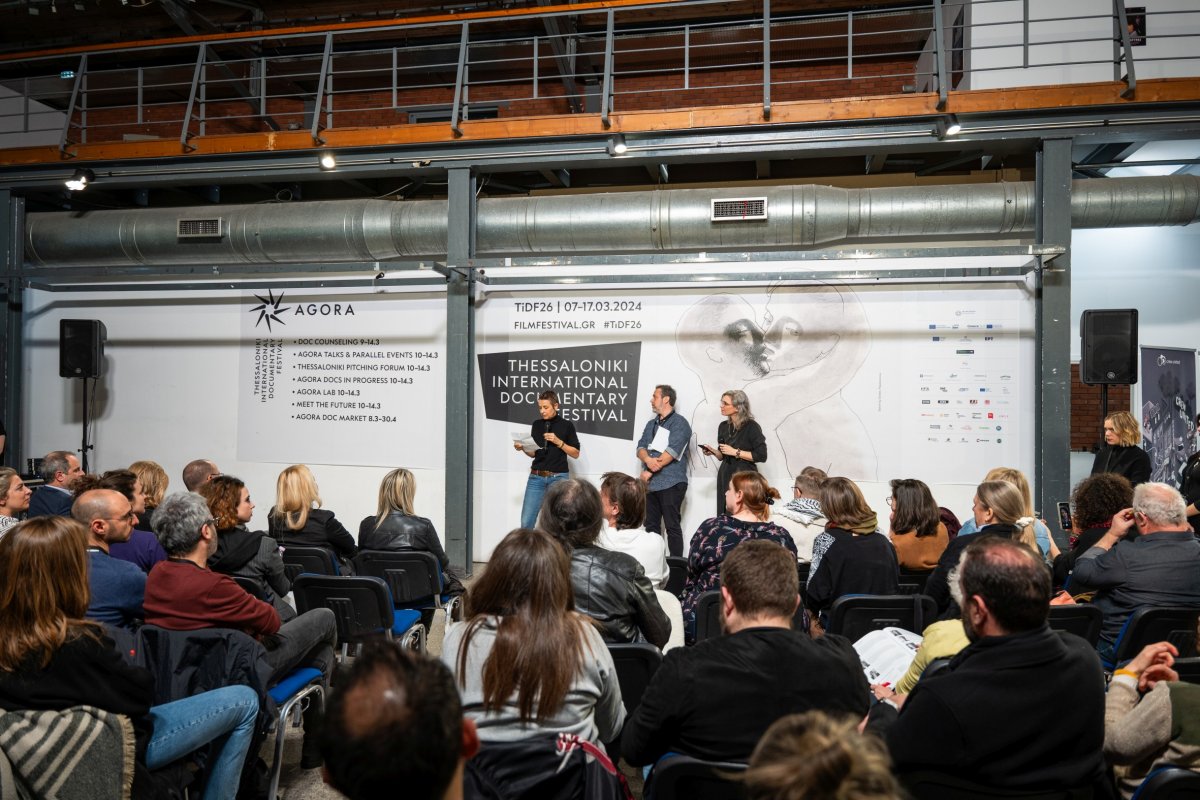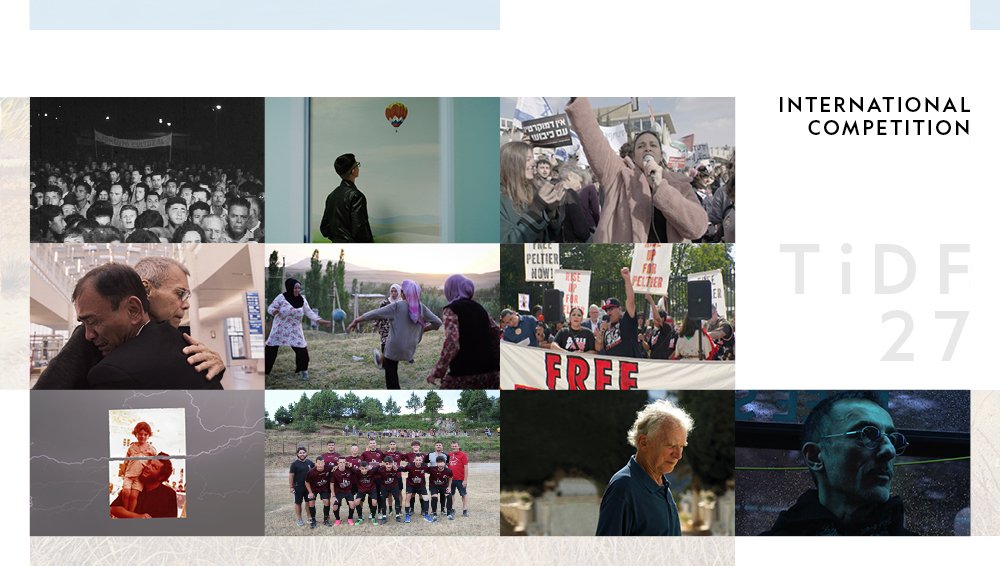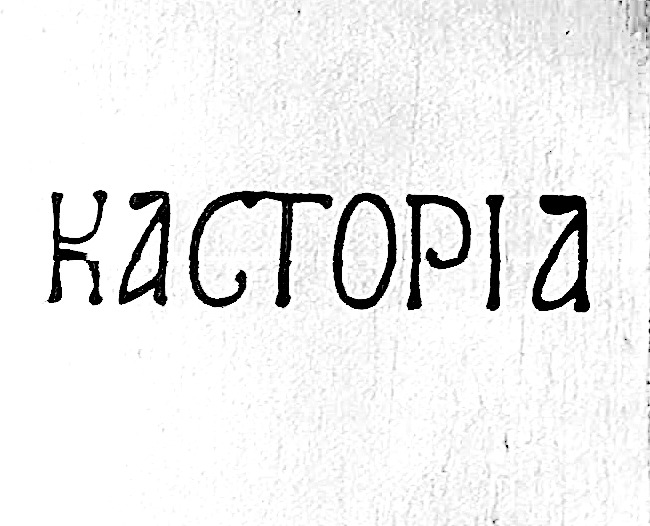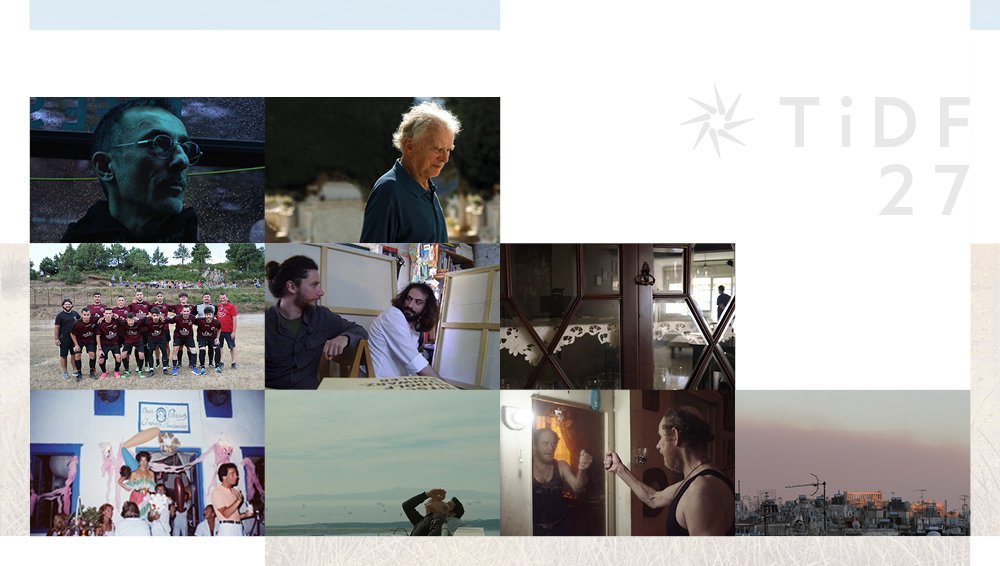Images of the 21stCentury
March 14-23, 2014
PRESS CONFERENCE
SHE IS MY HUSBAND / WE DID IT ON A SONG/
OVERDOSE - RUN FOR A DREAM /OLGA - TO MY FRIENDS
A Press Conference was held on Monday, March 17, 2014 as part of the 16th Thessaloniki Documentary Festival by directors Annamaria Gallone (She is my Husband), Paul-Anders Simma (Olga-To My Friends), Gabor Ferenczi (Overdose - Run For A Dream) and David Andre (We Did It On A Song).
Annamaria Gallone first took the floor, whose documentary She is my Husband
Top of Form
records the decision of 52 year old Alessandro to become a woman (Alessandra), while talking about his relationship with his partner, Roberta. The director explained: "The story of Alessandra was very unusual for me, different than what I had done until then . Our first meeting opened a door to a new, unknown world for me. I was struck by how determined he was. For many years he had suffered. He was a successful, well known lawyer and so to decide at 52 to become a woman is in itself a story completely different from most stories about transgendered people. Alessandra did not experience prostitution, had no financial constraints, however she was rejected by her bourgeois family. My intention was not to tell the story of a transgender person, but to show the love story of Alessandra and Roberta. I tried to go deep into the souls of these two characters. Not in a scandalous or sick way, I wanted to depict a love affair with both its dark and bright sides." The most important element of the film for Gallone is "Roberta in the story of Alessandra. I was more interested in what Roberta said instead of what Alessadra said, I found the contrast between the two characters charming." She added: "Their marriage was also very interesting. Italian journalists wrote that this was the first gay marriage in Italy, but this is not true, because Alessandra kept the name Alessandro in order for the wedding to go ahead . Through the documentary, Alessandra wanted to help people who are in a similar situation with her."
Bottom of Form
Then Paul-Anders Simma referred to his documentary Olga-To My Friends, whose heroine is a girl who is supposedly mentally challenged and orphaned, and who follows the reindeer herders in their migrations. However, this is a very smart teenager and excellent storyteller, with an unusual life history. The director recounted how he met Olga: "Olga lives 300 kilometers east from where I used to shoot films on the Russian side of the border. I shot many films in the area, and eventually I saw her near the shepherds, eating with their dogs. I asked them why they didn’t invite her to sit with them and they told me that she did things her own way and that she is silly and deaf. It seemed strange and I could not figure it out. During a snow storm that lasted three days, the men left and I stayed with Olga. I said ''good morning'' the first and second morning, without getting a reply until the third day she answered. From that moment she began talking to me, I asked her questions and it was like a dam broke, releasing a powerful river. When the shepherds returned, suddenly she was once again the silly, deaf girl." The director added: "I ??had briefly filmed Olga when she was speaking and I was mesmerized by her narrative ability and our acquaintance. So I decided to go back to find her and learn the story of the girl who everyone says has nothing to say." About Olga’s unusual story Simma explained: "Olga belongs to the Sami tribe, who are the only indigenous Europeans living in Sweden, Finland, Norway and Russia. The Russian authorities took her from her parents and she lived in an orphanage until she was 16. Then she returned to her village, without knowing anything about her past and the fact that she is not Russian. She had forgotten her mother tongue and although she found many relatives and belonged to a large tribe of reindeer herders, in her village she was seen as a stranger. She didn’t speak the language, which is why she was considered deaf." Asked about Olga’s loneliness, the director said: "I ??do not think she lives a solitary life. For the past 5-6 years she has been living in the camp looking after the shepherds’ dogs. She loves and is connected to many living creatures, such as deer and birds. People don’t interest her so much."
Hungarian director Gabor Ferenczi referred to his documentary Overdose - Run For A Dream, which is about a horse that answers to the name of Overdose. "In 2008 this horse won 12 consecutive races without being defeated and became very important in Hungary, he was the pride of the country. All media have focused on it and I thought that if this horse is important for my country, then it is also important for me," said the director. He added: "The film is essentially a story about the relationship between two characters: the owner of the horse and its trainer. I followed them with my camera for four years and through their relationship one can see the state of the country itself." The director spoke about the lessons learned from the creation of the documentary: "What I learned is shown in the film. The owner of the horse is a wealthy person, while the trainer is simply a professional from a village also nice, but who used many tricks one had to be careful of. They had to communicate with each other and I with them. At the same time, that contact changed the opinion I had of the rich. Generally, I learned that you have to observe someone for a long time before you learn something about people”.
Concluding the press conference, director David Andre took the floor, whose documentary We Did It On A Song focuses on five 17-year-old friends who make plans, but also worry about the future. Mr. Andre spoke about the idea behind the film: "I have made other films about social issues and my intention was to make a poetic work about the hopes of the generation of 18-year olds. This documentary is the story of a group of good friends who finish high school and of their parents, mainly working class people living in a small French town. We filmed for a year. I watched the dreams of the young people and the expectations of their parents and I wanted to show the rift between the two. After a year that I was there the young people and I became close friends and decided they would write texts, we would make them into songs and film them interpreting the songs in realistic scenes. Until the last day of editing, however, I did not know if the film will be completed or if I would end up in a psychiatric clinic. Our collaboration proved very interesting however, and the result was poetic and sincere." Commenting on his relationship with the people he filmed the director said: "I ??spent a lot of time building trusting relationships with these people. The point is to find a meeting point between what you want from others and what they think you want. My biggest anxiety was whether they would like the film. I showed it to them a month ago and they were very satisfied." Mr. Andre did not fail to mention how he also changed through the creation of the documentary: "I tried to become 17 years old, but I did not succeed ! It was a commitment on my part, a process that begins and ends. Of course it is something that changes one. "




